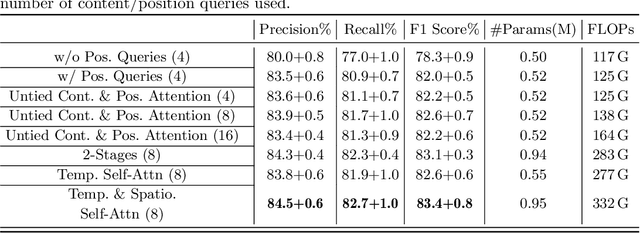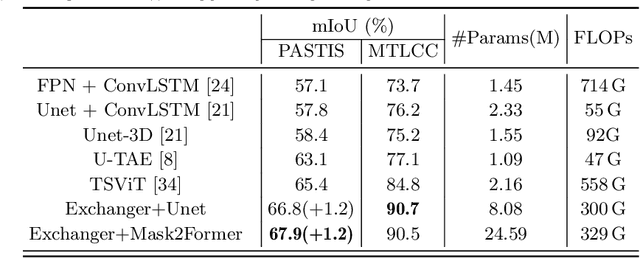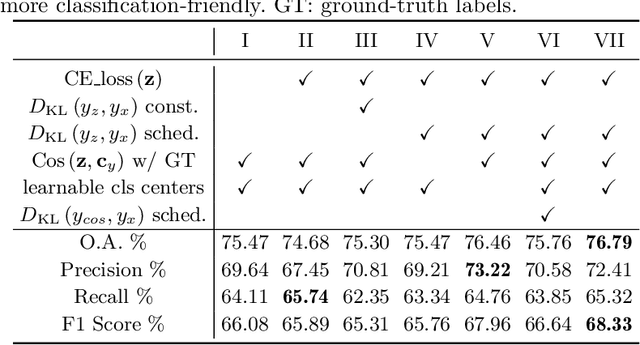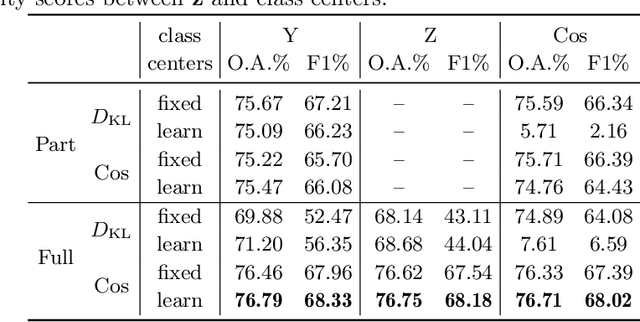Peter Nicholl
Rethinking the Encoding of Satellite Image Time Series
May 03, 2023



Abstract:Representation learning of Satellite Image Time Series (SITS) presents its unique challenges, such as prohibitive computation burden caused by high spatiotemporal resolutions, irregular acquisition times, and complex spatiotemporal interactions, leading to highly-specialized neural network architectures for SITS analysis. Despite the promising results achieved by some pioneering work, we argue that satisfactory representation learning paradigms have not yet been established for SITS analysis, causing an isolated island where transferring successful paradigms or the latest advances from Computer Vision (CV) to SITS is arduous. In this paper, we develop a unique perspective of SITS processing as a direct set prediction problem, inspired by the recent trend in adopting query-based transformer decoders to streamline the object detection or image segmentation pipeline, and further propose to decompose the representation learning process of SITS into three explicit steps: collect--update--distribute, which is computationally efficient and suits for irregularly-sampled and asynchronous temporal observations. Facilitated by the unique reformulation and effective feature extraction framework proposed, our models pre-trained on pixel-set format input and then fine-tuned on downstream dense prediction tasks by simply appending a commonly-used segmentation network have attained new state-of-the-art (SoTA) results on PASTIS dataset compared to bespoke neural architectures such as U-TAE. Furthermore, the clear separation, conceptually and practically, between temporal and spatial components in the panoptic segmentation pipeline of SITS allows us to leverage the recent advances in CV, such as Mask2Former, a universal segmentation architecture, resulting in a noticeable 8.8 points increase in PQ compared to the best score reported so far.
Tampered VAE for Improved Satellite Image Time Series Classification
Mar 30, 2022



Abstract:The unprecedented availability of spatial and temporal high-resolution satellite image time series (SITS) for crop type mapping is believed to necessitate deep learning architectures to accommodate challenges arising from both dimensions. Recent state-of-the-art deep learning models have shown promising results by stacking spatial and temporal encoders. However, we present a Pyramid Time-Series Transformer (PTST) that operates solely on the temporal dimension, i.e., neglecting the spatial dimension, can produce superior results with a drastic reduction in GPU memory consumption and easy extensibility. Furthermore, we augment it to perform semi-supervised learning by proposing a classification-friendly VAE framework that introduces clustering mechanisms into latent space and can promote linear separability therein. Consequently, a few principal axes of the latent space can explain the majority of variance in raw data. Meanwhile, the VAE framework with proposed tweaks can maintain competitive classification performance as its purely discriminative counterpart when only $40\%$ of labelled data is used. We hope the proposed framework can serve as a baseline for crop classification with SITS for its modularity and simplicity.
 Add to Chrome
Add to Chrome Add to Firefox
Add to Firefox Add to Edge
Add to Edge